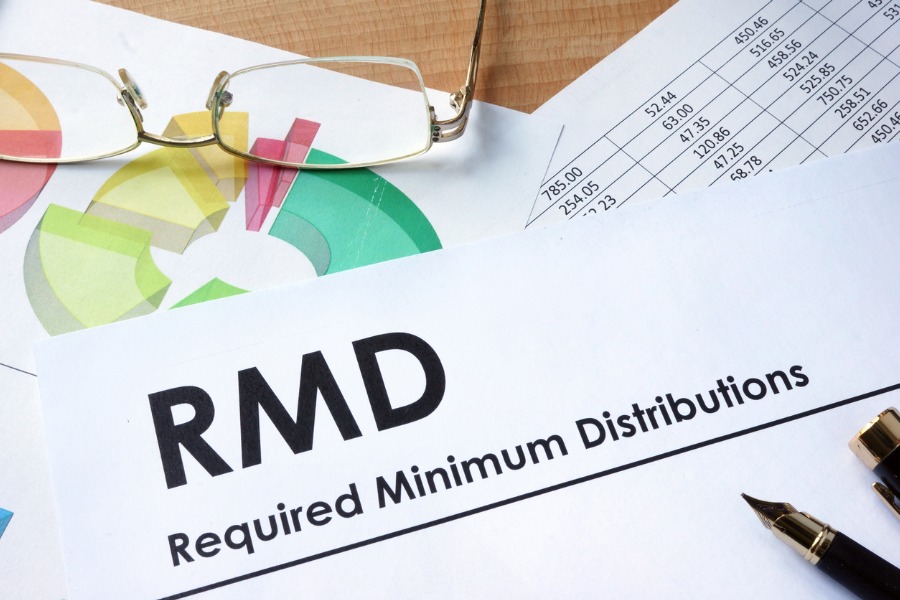2020: The Year Required Distributions Aren’t Required

Thanks to the CARES Act, required minimum distributions (RMDs) from tax-deferred accounts are not required during the 2020 tax year. Find out how you can take advantage of the 2020 modifications (even if you already took money out).
The rules have changed for 2020. For those who are receiving distributions from IRAs, it may be a year for tax savings that will not be seen again!
One of the most significant triggers of income tax for retirees each year is the annual requirement to take distributions from Traditional IRAs, 401(k)s, 403(b)s, and SEP IRAs. Throughout working years, individuals are permitted to defer income for retirement into these special investment accounts and receive tax deductions. Of course, at some point the federal government wants to receive tax dollars, so beginning at a certain age, distributions must be taken.
In December 2019, the SECURE Act was passed, which made substantial changes to retirement funding and withdrawals. For individuals turning 70 ½ in 2020 or later, the age for beginning Required Minimum Distributions (RMDs) was changed to 72. The result is that people who might have had to start taking money from their IRA in 2020 can now wait until 2021 or 2022 to begin distributions.
Now, only three months later, the CARES Act passed on March 27. While its impact on small businesses has received much of the attention, individual taxpayers may not have yet noticed that there was a big change for retirement distributions: for tax year 2020, no distributions will be required from tax-deferred accounts – for anyone. Not from Traditional IRAs, 401(k)s, 403(b)s, SEP or SIMPLE IRAs. Not even from Inherited IRAs, so there are even some younger than age 72 who are affected by this rule change.
Why was this change made for 2020? Required distributions for any given year are calculated using the December 31 account balance of the previous year. Many investment markets were at or near all-time highs at the end of 2019 and have dropped substantially in early 2020. Without the waiver of 2020 RMDs, this unique situation would otherwise have required individuals to take relatively large distributions from retirement accounts (because of the high 12/31/19 values) that had rapidly fallen in the ensuing months.
How to Take Advantage of the 2020 Modifications
A few thoughts should be taken into consideration on how to benefit from the recent CARES Act changes:
- For those who are relying on distributions from tax-deferred accounts to provide retirement income – especially if there are no other investment or savings accounts to draw from, the CARES Act modifications may have no impact.
- For those who are only using their tax-deferred account for monthly withdrawals because of the RMD rules – who have other taxable investment accounts or savings accounts to potentially draw from, discontinuing (or at least substantially lowering) those IRA distributions for the remainder of 2020 may make sense. This change would significantly lower taxable income for the year.
- For those who are taking one-time withdrawals at some point in the year to satisfy RMD requirements, foregoing the 2020 RMD altogether likely makes sense. Again, this move will save substantially on income taxes for the year.
What If I Have Already Taken Money Out?
For those who have already taken withdrawals from tax-deferred account(s) for 2020, a correction may be possible.
Single withdrawals of IRA funds may be redeposited into tax-deferred accounts within 60 days and considered a “rollover” rather than a distribution, thus avoiding taxes. Individuals should work with their custodian or advisor to determine the best way to accomplish this. (Also, keep in mind that only one 60-day rollover is permitted in any 12-month period, so if a 60-day rollover has already been done recently, this option might not be possible.)
In many cases, individuals have already withheld money from the withdrawals to federal and/or state governments for income taxes. These monies cannot be returned to the tax-deferred account. They must stay with the government until tax filing the following year. This complication leaves two choices:
- Redeposit the NET IRA distribution that was sent to the taxable investment account or bank account. Taxes will be owed on the distributions that were withheld for taxes, but the majority of those funds should be able to be refunded at tax filing in 2021.
- Redeposit the GROSS IRA distribution that was sent to the taxable investment account or bank account, using additional funds to cover the entire distribution (including withholdings that were made for taxes). In that case, no taxes will be owed, and the entire amount(s) withheld should be able to be received as a refund in 2021.
For those taking monthly withdrawals, the most recent monthly withdrawal may be able to be considered as a 60-day rollover, either of the above two options to be on a smaller scale for just a single month’s distribution.
If beyond the window of a 60-day rollover, two alternatives may be possible:
- If the individual is subject to unusual hardship as a result of the COVID-19 pandemic, the distributed funds may be able to be considered as a loan from a tax-deferred account. The CARES Act has a special provision that allows for up to three years of repayment of a loan from a tax-deferred account, bypassing the typical 60-day rollover rule.
- Funds that have already been distributed from a Traditional IRA can be moved into a Roth IRA and be considered a 2020 Roth Conversion.
Subsequent to the CARES Act, the IRS released Notice 2020-23, which allowed for an extension on actions that should have been taken by April 1 to now be able to occur by July 15. This means, in effect, that for any single IRA distribution taken after February 1, 2020, it can be undone by July 15 – thus expanding the usual 60-day window for an IRA rollover. This exception does not waive the once-every-365 limitation on rollovers.
2020 is a critical year to be in touch with tax preparers and/or financial advisors – on the RMD and other issues. Individuals may even be able to substantially lower quarterly estimated tax payments, either based on these lower IRA distributions outlined above or due to lower expected realized capital gains in 2020. Only in an unusual year like 2020 will people perhaps not be surprised to hear: the usual requirements aren’t necessarily required.

